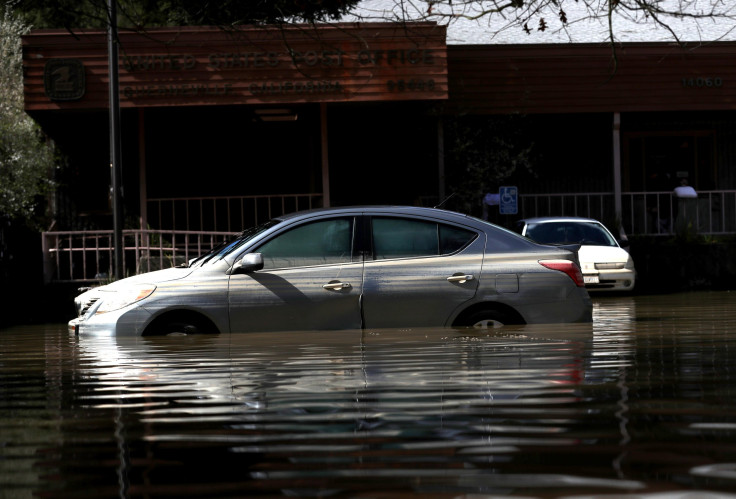Davenport Flooding: Evacuations Underway After Barrier Fails, Mississippi River Overflows [Video]

The HESCO barrier that kept floodwaters from the Mississippi river from flowing into Davenport, Iowa, failed Tuesday, sending fast-moving waters into the city's downtown and causing many residents to seek higher ground for protection.
The barrier failed around 3:30 p.m. CDT (4:30 p.m. EDT), and within the next 15 minutes, the river, which rose to nearly 22 feet, spilled into Iowa’s third largest city, which has a population of 100,000. With the inundated portion of downtown Davenport spanning about four blocks and the water reaching six feet in some areas, emergency responders were forced to evacuate people living in those areas – some of them by boats.
Local businesses closed Tuesday as volunteers and rescue workers filled sandbags to keep the floodwaters out of the buildings. No injuries were reported in the flooded areas.
"It was just the one barrier, so we're not expecting the flooding to spread beyond what we're seeing now," Davenport Public Works Director Nicole Gleason said, USA Today-affiliated Des Moines Register reported. "That could change with heavy rain."
Davenport Flood Breach: What’s happening Downtown Davenport https://t.co/H6XEYWqsbO pic.twitter.com/3GnK6QOiT6
— WQAD (@wqad) May 1, 2019
Flooding on W. 2nd Street in downtown Davenport #qcflood2019 pic.twitter.com/2byWrA4DIc
— Giang Nguyen (@giangreports) May 1, 2019
Officials in Iowa were already concerned over the Mississippi flooding for the past weeks due to heavy rain and melting snow in the area. Until Tuesday, flooding was restricted in areas such as the banks of Mississippi, the Interstate Highway 29 corridor and in spots across northern and north-central Iowa.
According to National Weather Service’s forecast, there were chances of scattered showers in Davenport on Wednesday, with a possible thunderstorm Thursday, which could dump over an inch of rain in the city.
Iowa Gov. Kim Reynolds assured people that every possible measure was being taken to fight the recent flooding.
“We are in contact with @IowaHSEMD, @iowadot, and local officials on the ground concerning the severe flooding in Davenport and working to make any necessary resources available. Flooding will likely worsen tomorrow so please remain vigilant, follow directions from local officials and law enforcement, and be prepared to evacuate if necessary,” she said in a couple of tweets.
Davenport Mayor Frank Klipsch said power was cut to all the affected buildings as rescue workers continue with the evacuations. "Obviously we need some dry weather so that the water can get back where it belongs," he told ABC/MyNetworkTV-affiliated WQAD-TV.
Cars were seen floating in the floodwaters in the city and water came up to the rooftops of some cars. Floodwater temperatures were estimated to be at about 40 degrees Fahrenheit.
The cause of the barrier's failure was not confirmed by local officials, although Kurt Allemeier, Davenport city spokesman, said the structures were being forced to keep floodwaters out since mid-March as the river started to rise. “Our city engineer said they had never had to withstand waters that tall for that long,” Allemeier said.
Referring to the great flood of 1993, across states such as Minnesota, Nebraska, Wisconsin, Kansas, Iowa, Missouri, Illinois, and Indiana, that killed 50 people and caused damages worth over $15 billion, WQAD-TV meteorologist Eric Sorensen said, “Downtown Davenport has worked so hard … for 1993 to happen again.”
“This is exactly what ’93 looked like,” Sorensen added. “This is really something, you guys. I’m at a loss. All of our fighting to keep that river back. Everybody’s businesses here are going to go. This is a great place. Man, Davenport is a great place. … This is just something.”
© Copyright IBTimes 2025. All rights reserved.






















